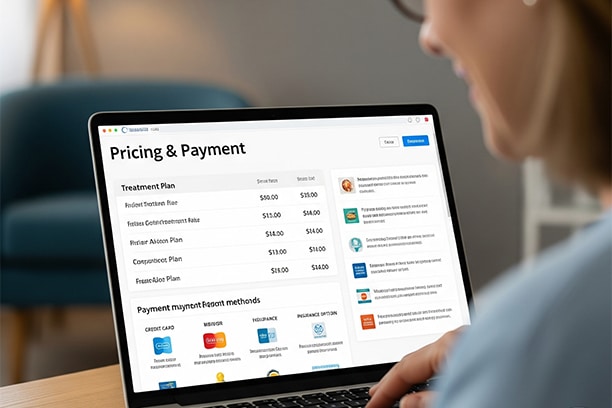At Melbourne ENT, located in St Kilda East, Victoria, we treat a comprehensive range of ear, nose, and throat (ENT) conditions for both adults and children. Our highly experienced ENT specialists, Dr Stephen Kleid and Dr Simon Braham, are Fellows of the Royal Australasian College of Surgeons (FRACS) and offer tailored, compassionate care. One of the most common ENT issues we address, especially in children, is glue ear, often managed effectively with grommet insertion surgery.
We understand how hearing issues can impact not only communication but also learning, development, and quality of life, particularly in growing children. Our clinic is dedicated to providing effective, evidence-based care with a gentle, supportive approach.

What Is Glue Ear?
Glue ear, also known as otitis media with effusion, is a condition in which the middle ear fills with thick, sticky fluid rather than air. This fluid build-up prevents the proper movement of the eardrum, leading to hearing difficulties. Unlike an acute ear infection, glue ear may not cause pain or fever, making it harder to detect in young children.
The Eustachian tube, which normally equalises pressure and drains fluid from the middle ear, may become blocked due to colds, allergies, or infections. When this happens, fluid accumulates behind the eardrum, impairing hearing. Over time, if this fluid is not cleared, it can become more viscous and glue-like, hence the term “glue ear.”
Glue ear can affect one or both ears and is particularly common in children under the age of seven, though it can also affect adults. In children, it often goes unnoticed until a parent or teacher identifies signs of hearing difficulty or speech delay. In adults, it may be associated with sinus problems or after a bout of severe nasal congestion.
Common Symptoms Of Glue Ear

Glue ear often develops silently and may not present with the classic signs of an ear infection. Symptoms may include a gradual or sudden reduction in hearing, which can impact daily interactions and engagement with the surrounding environment.
In children, the condition may become evident when they are not responding to their name, misinterpreting speech, or appearing inattentive in noisy environments. They may show frustration during communication or struggle with social interactions due to poor hearing. Educators may report that a child is not progressing in speech or that learning difficulties are becoming apparent.
Adults with glue ear may experience a sensation of fullness in the ears or describe a “blocked” feeling that does not resolve. They may find conversations more challenging, especially in environments with background noise. Balance issues can occasionally occur, particularly when both ears are affected, as the fluid can interfere with the inner ear’s ability to regulate balance.
Who Is Affected By Glue Ear?
Glue ear can affect individuals of all ages, but it is especially prevalent in young children due to anatomical and developmental factors. Their Eustachian tubes are shorter, narrower, and more horizontal, making them more susceptible to dysfunction. Children in early childhood settings may experience frequent colds and infections, increasing their risk.
Children with developmental conditions, such as Down syndrome or cleft palate, are at higher risk due to differences in facial and ear structure. Environmental exposures, such as second-hand smoke or pollutants, can also impair Eustachian tube function, increasing the risk of glue ear. Seasonal variations, especially during winter and spring, often see a rise in cases due to increased upper respiratory infections.
In adults, glue ear is less common but can still occur, particularly after upper respiratory infections, significant nasal congestion, or if there is a history of sinus disease or allergies. Chronic sinusitis and allergic rhinitis can both contribute to Eustachian tube dysfunction in adults, leading to persistent middle ear effusion.
Diagnosis And Evaluation At Melbourne Ent
At Melbourne ENT, we take a thorough and child-friendly approach to diagnosing glue ear. Our evaluation process typically includes a combination of clinical history, physical examination, and specialised tests. This ensures that we correctly identify the presence of fluid in the middle ear and assess its impact on hearing.
Our first step is a detailed discussion about symptoms, past ear infections, speech development milestones, and any behavioural changes. During the physical examination, our ENT surgeons use an otoscope to visually inspect the eardrum. This helps us identify signs such as dullness, fluid levels, or retraction of the eardrum.
We then perform tympanometry, a quick and painless test that measures how well the eardrum moves in response to pressure changes. This helps us detect fluid behind the eardrum, even if it isn’t visible. Audiometry is used to assess the degree of hearing loss, tailored to the patient’s age and cooperation level. In some cases, particularly when there is concern about speech delay or learning difficulties, we may refer to a speech therapist or audiologist for further assessment.
Treatment Options For Glue Ear
Many cases of glue ear improve on their own, especially when associated with a cold or seasonal allergy. However, persistent or severe cases may require medical or surgical intervention. Our approach is always tailored to the individual patient, considering the severity of the symptoms, the impact on daily life, and the risk of long-term complications.
For mild cases, we often recommend a period of watchful waiting, monitoring the child’s hearing and development over time. In cases where allergy plays a role, treatment with nasal steroid sprays or antihistamines may help reduce inflammation and improve Eustachian tube function. Children with speech or language delays may benefit from concurrent speech therapy while glue ear is managed.
When fluid persists for more than three months or causes significant hearing loss or developmental concerns, surgical intervention is usually the next step. The most effective and commonly performed surgical treatment for glue ear is grommet insertion. This procedure provides a direct airway to the middle ear, preventing further fluid build-up and restoring hearing.
When Is Surgery Recommended?
Surgery is generally recommended when glue ear does not resolve naturally and is causing significant impact on the child’s development or quality of life. If fluid remains in the middle ear for longer than three months and is associated with hearing impairment, or if the child experiences multiple ear infections within a short time, surgical intervention is considered the most effective solution.
Children who show signs of speech delay, learning difficulties, or social withdrawal due to poor hearing may benefit greatly from grommet insertion. Likewise, children with additional medical conditions, such as Down syndrome, cleft palate, or autism, may require earlier surgical management due to the compounding effects on communication and development.
At Melbourne ENT, grommet surgery is performed under general anaesthesia as a day procedure, meaning your child can go home the same day. Our surgeons ensure a smooth and stress-free experience, with careful monitoring and a clear plan for aftercare and follow-up.
Recovery And Prognosis
Grommet insertion is a routine and highly effective treatment for glue ear. Recovery is typically fast and uncomplicated, allowing children to return to their usual activities within a day. Pain is minimal, and most children are back to normal routines quickly. Hearing often improves immediately or within a few days, as the fluid drains and the middle ear is ventilated.
The grommets themselves usually stay in place for six to twelve months and fall out naturally as the eardrum heals. Regular follow-up visits are important to ensure the grommets remain in position and functioning well. In some cases, if the glue ear recurs after the tubes fall out, a second insertion may be necessary.
Parents are advised to follow specific care guidelines post-surgery, such as avoiding dirty water entering the ears during swimming or bathing. In most cases, no further interventions are needed once hearing is restored, and children often catch up quickly on speech and learning milestones.
Risks Or Complications If Left Untreated
If glue ear is not treated, especially in children, potential complications may include significant and prolonged hearing loss. This can have a cascading effect on a child’s language acquisition, academic performance, and social development. Children may struggle with pronunciation, vocabulary, and sentence structure, which can lead to frustration and behavioural issues.
In the longer term, untreated glue ear can cause changes to the middle ear, including thickening of the eardrum, formation of retraction pockets, or even cholesteatoma in rare cases. Chronic fluid build-up may also lead to repeated infections, which can damage the middle ear bones and affect long-term hearing ability.
In adults, persistent glue ear may be a sign of underlying conditions such as Eustachian tube dysfunction, chronic sinusitis, or nasopharyngeal pathology, and should not be ignored. A thorough evaluation by an ENT specialist is essential to exclude more serious causes.
Why Choose Your Surgeon
At Melbourne ENT, your care is in expert hands. Our surgeons bring not only decades of experience but also a patient-first approach that places communication, safety, and outcomes at the forefront.
Dr Stephen Kleid
Dr Kleid is a renowned ENT and Head & Neck Surgeon with over four decades of surgical experience. His career includes senior appointments at prestigious institutions such as Peter MacCallum Cancer Centre and Royal Melbourne Hospital. He has taught and mentored countless ENT trainees and remains actively involved in ENT research, including studies on ear surgery and cochlear implants. Dr Kleid is known for his thoroughness, warmth, and dedication to providing the best possible outcomes for his patients.
Dr Simon Braham
Dr Braham is a dual-trained ENT Surgeon with advanced fellowship training in New York and Boston. He has a special interest in paediatric ENT surgery, including grommet insertion, tonsillectomy, and snoring treatments in children. He is known for his calm and reassuring approach with children and families, making him a popular choice for paediatric ENT care. Dr Braham holds public appointments at the Royal Victorian Eye and Ear Hospital and Kyneton Hospital and operates at Masada Private Hospital.
FAQs About Glue Ear
What if my child’s symptoms come and go – does that still count as glue ear?
Yes, glue ear can fluctuate and may improve briefly before returning. This pattern is common and still requires evaluation if hearing or development is affected.
Can glue ear affect only one ear and still cause hearing problems?
Absolutely. Even if only one ear is affected, it can significantly disrupt sound localisation and affect your child’s ability to follow conversations, especially in noisy environments.
Is glue ear connected to allergies or sinus problems?
Yes, allergic rhinitis and chronic sinus congestion can contribute to Eustachian tube dysfunction, which is a key factor in glue ear development.
Will my child need speech therapy alongside grommet treatment?
In many cases, yes. If glue ear has delayed speech or language development, speech therapy can help your child catch up once hearing is restored.
Are there non-surgical steps I can take to help my child at home?
Supporting overall nasal hygiene, managing allergies, avoiding tobacco smoke exposure, and keeping your child upright during colds may reduce the risk of glue ear returning.
Does glue ear ever go away permanently?
Yes, many children outgrow glue ear as their Eustachian tubes mature. However, some may need repeated treatment if structural issues or frequent infections persist.
How will I know if the grommets have fallen out?
In most cases, they come out unnoticed and naturally. Your ENT specialist will monitor their status during follow-up visits and inform you if any further action is needed.
Sources:
- An evaluation of the Hear Glue Ear mobile application for children
https://journals.sagepub.com/doi/10.1177/2055207620966163 - Glue ear: an ongoing global program—closing the audiology gap among First Nations children
https://www.sciencedirect.com/science/article/pii/S1526054225000533 - Diagnosis and management of middle ear disease in children
https://www.sciencedirect.com/science/article/abs/pii/S1751722223001506 - Otitis Media With Effusion – StatPearls – NCBI Bookshelf
https://www.ncbi.nlm.nih.gov/books/NBK538293/ - Otitis media with effusion and hearing outcomes – Myringotomy vs other treatments
https://www.wjgnet.com/2218-6247/abstract/v12/i1/109355.htm - The use of hearing devices for children with persistent otitis media with effusion
https://www.tandfonline.com/doi/abs/10.1080/14992027.2025.2478269 - Spontaneous resolution of ‘glue ear’ in children – An experience at a tertiary care center
https://mail.thejas.com.pk/index.php/pjhs/article/view/605
Concerned About Glue Ear?
If you or your child are experiencing symptoms of glue ear or have concerns about hearing, early diagnosis and treatment are essential. At Melbourne ENT, we take the time to assess each patient’s situation carefully and explain all treatment options clearly. Our team is committed to supporting families with clarity, empathy, and expert care throughout the diagnostic and treatment process. Prompt attention to glue ear can make a lasting difference in a child’s development, learning, and overall wellbeing. For further information or to arrange a consultation, please visit our website.
Further Reading
- Read about Melbourne ENT’s Ear Concerns
- Read about Melbourne ENT’s Adenoidectomy
Why Choose Dr Kleid ?

Dr Stephen Kleid,
Melbourne ENT Surgeon
MED0001052799
Dr Stephen Kleid is an experienced ENT Surgeon (Otolaryngologist) based in Melbourne with a passion for Septo-rhinoplasty, Septoplasty and a strong interest in Rhinoplasty Revision.
Dr Kleid’s Procedures
Why Choose Dr Braham ?

Dr Simon Braham,
Melbourne ENT Surgeon
MED0001144757
Dr Simon Braham MBBS (Hons) FRACS is an experienced Ear, Nose and Throat ENT Surgeon (Otolaryngologist) based in Melbourne, performing tonsil, grommet and sinus surgery for children & adults. He helps patients with breathing issues, snoring concerns and sleep disturbances.
Dr Braham’s Procedures
How can we help?
Dr Kleid’s Team takes pleasure in assisting you with any questions when considering a plastic surgery procedure. Please call the St Kilda East clinic in Melbourne between 9am – 5 pm on Weekdays.
What Next?

Want more information about your Procedure?
- Please read our website and blogs to find out more about your procedure and concerns
- For more information about pricing and payment methods, please visit our page on Surgery Payment Options.
- Talk to our Patient Care Team from 9 am to 5 pm Monday to Friday

What to Bring to Your Consultation
- We encourage you to bring a friend or family member to accompany you, as they can provide an extra perspective and support throughout the process.
- It is important to take thorough notes and carefully review all the documents provided to you.

How to Book a Consultation
- A referral from your GP or Specialist is necessary to see a surgeon for a consultation.
- Dr Kleid’s Nose Surgery consultation fee is $600 which includes a nasendoscopy ($300).
- Please contact us today to book your consultation.

